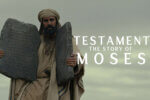In past seasons, Christians understood GOD’S VISION for SPIRITUAL HARVEST. We could lose A GENERATION if we don’t reclaim this forgotten promise.
It has been my joy to train hundreds of pastors and missionaries in Ethiopia. Through the years, I’ve seen firsthand the incredible spiritual harvest they are reaping. In fact, Ethiopia now has one of the world’s fastest-growing Christian bodies. In recent years, more than 1,900 churches have been planted among people who previously were unevangelized.
On my last trip there, I heard about several people who had been raised from the dead. I asked an Ethiopian friend, “Can this be documented?” “Yes!” he said. “I have met them.”
Raised from the dead! When I mention that to some American audiences who are unaccustomed to miracles, I can almost hear people wondering, How dead were they, anyway?
Their incredulity is not surprising considering that Americans, who no longer come from a primarily agricultural society, have lost a clear understanding of the process that brings spiritual harvest. Yet such an understanding is crucial to making sense of God’s Word—which is replete with imagery related to agriculture—and to fulfilling the Great Commission.
Remember, Scripture was written by people who were linked to the soil. Even those who became prophets and kings often had to leave fields and flocks to fulfill God’s call.
One aspect of Jewish life the Bible describes that reflects an agricultural framework and that can provide insight into God’s plan for spiritual harvest is the feasts celebrated by the Israelites, particularly Passover, Pentecost and the Feast of Booths.
Passover
The feast of Passover celebrated God’s dramatic redemption of the Israelites from bondage in Egypt as recorded in the book of Exodus. God poured out plague after plague on the Egyptians, ruining crops, killing cattle, afflicting people with physical maladies. The 10th plague—the final one—took the lives of the firstborn throughout Egypt.
The Israelites were not automatically spared this calamity. God required every Hebrew man to kill a lamb and paint the blood on the side posts and upper door post of his home. God said, “‘”The blood will be a sign for you on the houses where you are; and when I see the blood, I will pass over you”‘” (Ex. 12:13, NKJV, emphasis added). Thus, we get the name—Passover.
In the annual Passover celebration, Jewish people relive the tangible evidence of God’s mercy and deliverance. This celebration has prophetic significance with regard to the Messiah.
The apostle Paul explained, “Christ, our Passover, was sacrificed for us” (1 Cor. 5:7). He was referring to Jesus, who shed His blood so God’s judgment would pass over anyone who would humbly accept that substitution.
Passover foreshadowed Christ’s crucifixion. The Feast of Unleavened Bread, which accompanied Passover and required Israelites to refrain from eating any food with leavening in it, symbolized the removal of sin and the process of sanctification.
The Feast of Firstfruits, which also accompanied this celebration, anticipated Christ’s resurrection, as indicated by the apostle Paul, who wrote, “Christ is risen from the dead, and has become the firstfruits of those who have fallen asleep” (1 Cor. 15:20).
The Feast of Firstfruits provides the agricultural link for Passover, for it corresponds to the springtime barley harvest. Hebrew law required priests to present a wave offering—to literally wave a portion of the first harvested grain as a symbolic sacrifice to the Lord (see Lev. 23:9-14).
In his classic book The Temple: Its Ministry and Services, Alfred Edersheim notes that at the time of Christ, delegates from the Sanhedrin would walk outside Jerusalem to a previously selected barley field in the Kidron Valley. Accompanied by a great crowd, this delegation would publicly reap the “Passover sheaf,” which became the wave offering on the following day.
The barley was threshed to remove the grain from the stalks. It was cooked in a perforated pan, so each grain would be touched by fire. Finally, it was exposed to the wind.
Then it was ground into flour, part of which was mixed with oil and frankincense. The following day, the priest waved that mixture before the altar and removed a handful for burning.
This sacrifice accompanied a burnt offering of a year-old lamb and appropriate meat and drink offerings. All this was required before Israelites could use or sell fresh barley.
Edersheim believes this reaping occurred at the same time as Jesus’ burial, and the wave offering occurred with His resurrection.
Regardless of the timing of those events, Jesus did use agrarian imagery to describe His death and resurrection. “‘Unless a grain of wheat falls into the ground and dies,'” He told His disciples, “‘it remains alone; but if it dies, it produces much grain'” (John 12:23-24). Thus, Passover and its accompanying ritual, which honored the Lord with harvest’s firstfruits, are realized in Christ’s sacrificial death and victorious resurrection. This is the starting point for growing God’s kingdom.
Pentecost
The Greek word Pentecost indicates that this feast came 50 days after Passover. The Hebrews called it the Feast of Weeks, honoring the seven weeks between Passover and Pentecost.
The Feast of Weeks fell in late spring or early summer, coinciding with the wheat harvest. Good weather facilitated travel. That probably is why so many people were in Jerusalem for the event described in Acts 2. The varying costumes and cacophony of languages reflected their nationalities.
But God interrupted their expected sequence. Jesus’ followers erupted into the streets, giving the message of salvation in varying languages “as the Spirit gave them utterance” (Acts 2:4). All those people heard the gospel in their own languages. Peter called them to repent, and about 3,000 people responded and were baptized.
The timing was not a coincidence. According to Jewish tradition, Pentecost marked the anniversary of their receiving God’s Law on Mount Sinai. This holiday celebrated the birthday of Judaism—or some say the anniversary of the Hebrew nation’s marriage to God.
Looking through New Testament eyes, we consider Pentecost the birth of the church. But in a real sense, Pentecost also celebrates the fulfillment of that original marriage, pictured in Exodus as a covenant between God and Israel, through the introduction of the church as the “bride of Christ.”
It provides the spiritual application for a Jewish celebration, designed to thank God for harvest. Acts 2 records a spiritual harvest—a cross-cultural missions event, with people from 43 countries drawn to Jerusalem for the outpouring of God’s Spirit.
That was the initiation of breakthrough signs and wonders, which launched the miraculous growth of the global church. In this 21st century, we must remember that the outpouring of the Holy Spirit was and is meant to fuel global harvest.
The Feast of Booths
The seventh month on the Jewish religious calendar contained more holy days than any other: the Feast of Trumpets, the Day of Atonement and the Feast of Booths.
God instructed His people to blow trumpets at the beginning of every month. But a special observance marked the seventh month, and the sound of the shofar became its distinctive trait.
The trumpet issued a call to repentance and a reminder that a faithful God requires a faithful people. The Feast of Trumpets is celebrated now as Rosh Hashana, literally meaning “head of the year.” It marks the beginning of the fiscal or agricultural year and is thus the Jewish New Year’s Day, but it falls in the seventh month on the calendar, as does Yom Kippur, the “Day of Atonement.”
The Feast of Booths was a seven-day event that completed the holiday season. It was the calendar’s most festive holiday. To celebrate the Feast of Booths, called Sukkot in Hebrew, Jewish people built temporary shelters of branches and leaves and lived in them for seven days. This re-enactment of their ancestors’ wilderness wanderings reminded them of God’s faithfulness.
In contrast to the solemnity of the Feast of Trumpets and Day of Atonement, this celebration, often called “The Season of Our Rejoicing,” is a festive one. Since it coincides with the year’s final harvest, it is also called “The Feast of Ingathering.”
In our contemporary age, it is sometimes difficult to understand the centrality of harvest in the Hebrew mind-set. Ancient Israel had an agrarian economy, so the people’s lives revolved around the growing of food. Plentiful harvest was a great cause for celebration, for it meant sustenance for another year.
Interestingly, Scripture applies the concept of bountiful harvest to God’s kingdom by linking Sukkot with God’s concern for those who are not yet included among His people. For example, Solomon’s dedication of the temple in Jerusalem coincided with this feast, and in his dedication prayer, Solomon interceded for Gentiles:
“‘Moreover, concerning a foreigner, who is not of Your people Israel … when he comes and prays toward this temple, hear in heaven … and do according to all for which the foreigner calls to You, that all peoples of the earth may know Your name and fear You, as do Your people Israel'” (1 Kin. 8:41-43, emphasis added).
Solomon repeated his missionary request, concluding, “‘May these words of mine, with which I have made supplication before the Lord, be near the Lord our God day and night … that all the peoples of the earth may know that the Lord is God; there is no other'” (1 Kin. 8:59-60, emphasis added).
Jewish literature wraps Sukkot around Israel’s responsibility to bring redemption to the world. Some authors state that the Israelites offered sacrifices during this celebration for other ethnic groups. They prayed for God to bless them so that other nations could experience salvation and know the blessing of bountiful harvest.
Reaping the Harvest
How are we doing in reflecting that same passion for growing God’s kingdom? Well, I have good news and bad news. Let me give you the good news first.
According to statistics compiled by Jim Rutz and David Barrett, contemporary disciples are reaping a tremendous harvest around the world, with about 175,000 people becoming Christians on a daily basis. This figure takes into account both conversions and birthrates, and about 20,000 of these are nominal Christians who may or may not actually be saved. Within that framework, let me note that the renewal community of Christians represents the fastest-growing religious group in the world.
Now here’s the bad news. The incredible growth I’ve described is happening primarily overseas. Here in America, George Barna tells us about 7,000 churches are closing every year, and only 3,000 new ones are opening.
I believe these statistics reflect a loss of the harvest mentality among American believers. We need to restore the Hebrew understanding that celebration should advance the global harvest, for despite the exponential growth of Christianity overseas, the bottom line is that 3 billion people—that’s about half the world’s population—still are waiting to hear the gospel in a culturally appropriate way that invites their positive response through conversion.
We’ve already seen that the three primary Jewish festivals celebrate harvest, and they build on one another. They foreshadow God’s plan to grow His kingdom—Christ’s sacrificial death and resurrection birthed the church that, like Israel, has a global mandate to take the good news of redemption and blessing to the whole world (see Matt. 28:18–20; Mark 16:15–16; Luke 24:46–48; John 17:20–23).
Acts 1:8 particularly calls Jesus’ followers to be His witnesses “‘in Jerusalem, and in all Judea and Samaria, and to the end of the earth.'” The Greek does not imply a geographic ministry progression; that is, first Jerusalem, then Judea, then Samaria, then the ends of the earth. It implies rather that Christ’s followers should minister simultaneously in all four sectors—in the power and demonstration of the Holy Spirit.
In contemporary application, that means local churches and individual Christians should be involved in concurrent ministry in their own culture, in similar cultures, and in cultures that are entirely different from their own. They can help fulfill the Great Commission through personal contact, but also through praying, giving and supporting those who go to other cultures.
This kind of ministry focus will happen naturally as we renew our understanding of the centrality of harvest as reflected generally in Scripture, and specifically in the feasts on the Hebrew calendar.
Church history records that John Knox, a Scottish reformer in the 16th century, had a mentality that supported spiritual harvest. Knox prayed a heartfelt request to God—”Give me Scotland,” he said, “or I die.” In essence, his desire for spiritual harvest was so strong, he felt he would die if it didn’t happen.
Knox had a clear understanding that spiritual harvest is crucial for survival. It was his primary—perhaps even solitary—goal. And by the end of his lifetime, Scotland had undergone widespread reform.
To see similar results today, we each must examine ourselves carefully and, with brutal honesty, fill in the blank for ourselves: “Lord, give me ________________, or I die.” If our desire has nothing to do with spiritual harvest, then we must revisit Scripture and bring our motivations into alignment with God’s harvest mentality. We must deal with the fact that without harvest we die.
Howard Foltz, D.Min., is the founder and president of Accelerating International
Mission Strategies (AIMS). He is also professor of Global Evangelization in the School of Divinity at Regent University in Virginia Beach, Virginia. He has more than 40 years of practical ministry experience and has written several books, including Paradigm Lost: Rediscovering God’s Plan for Spiritual Harvest.






Leave a Comment
You must be logged in to post a comment.